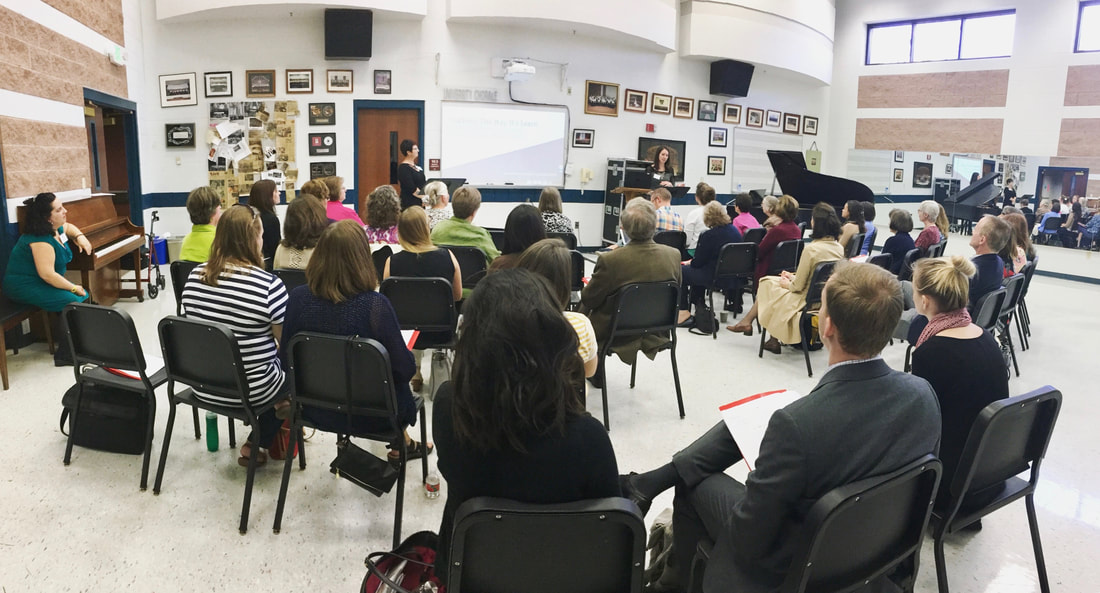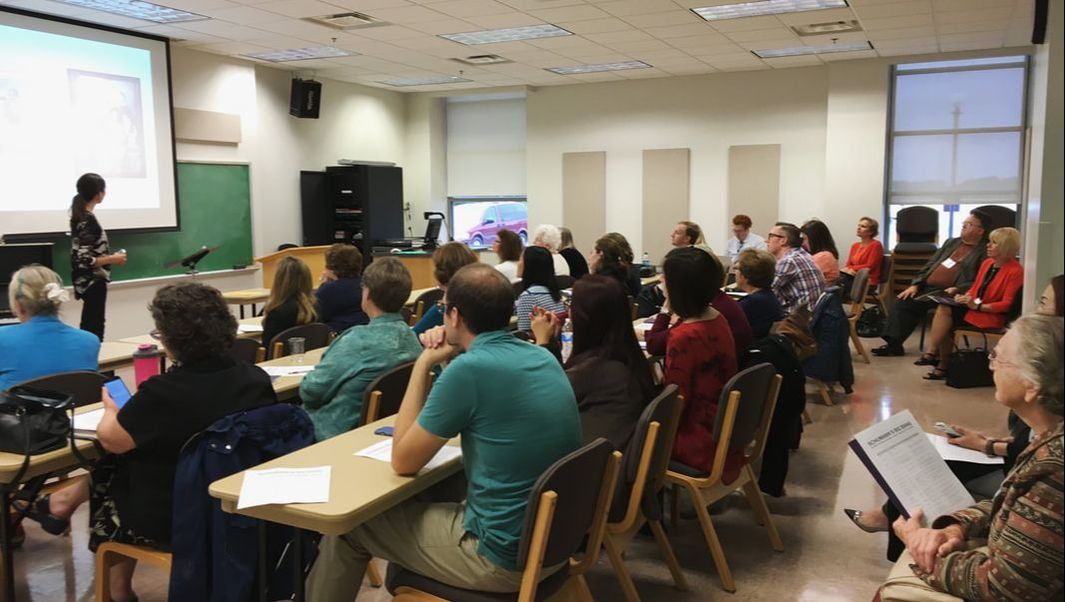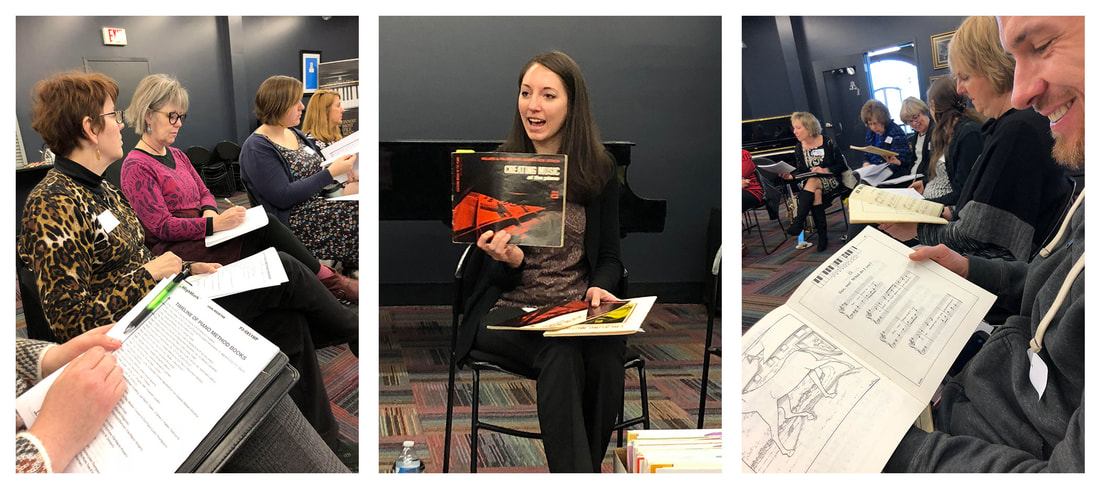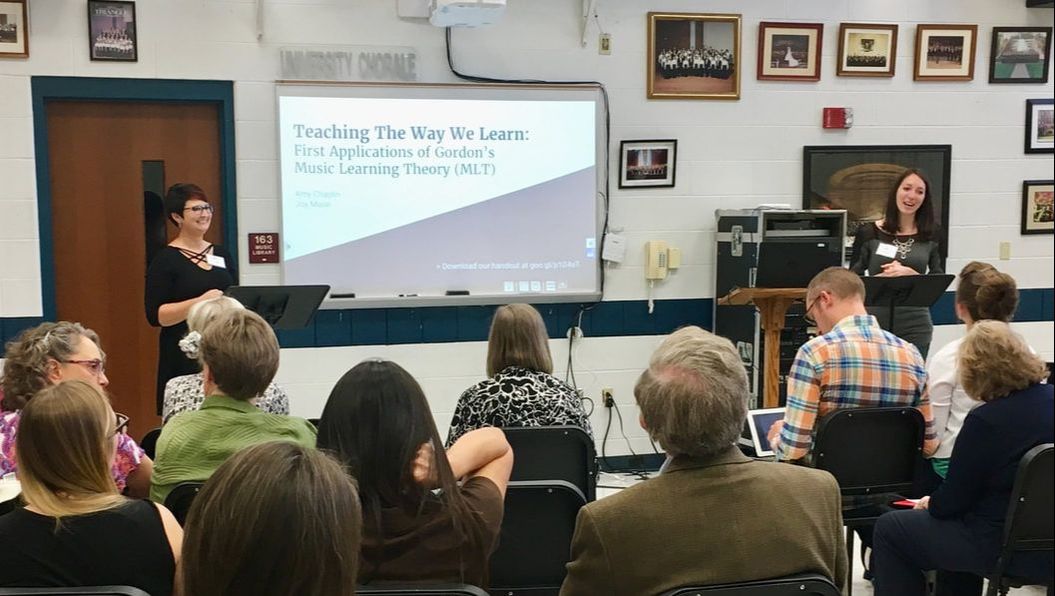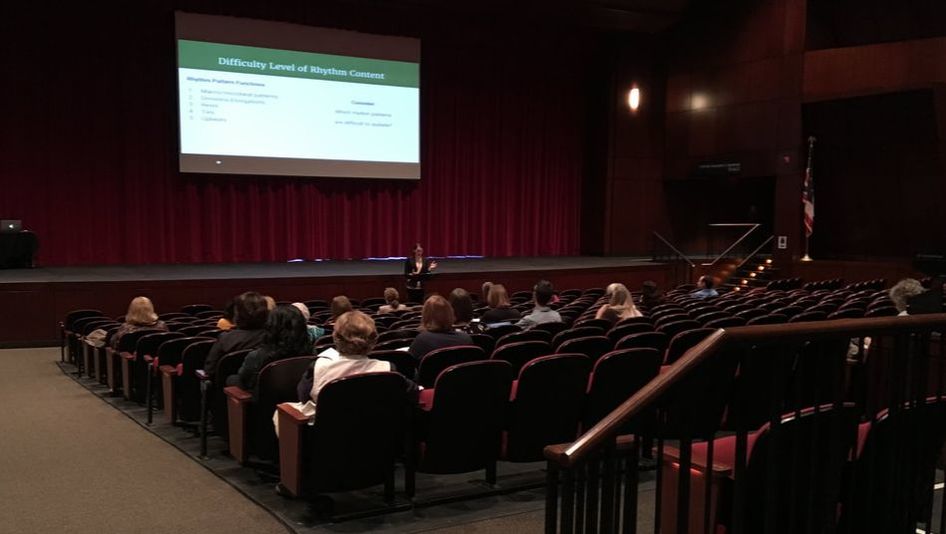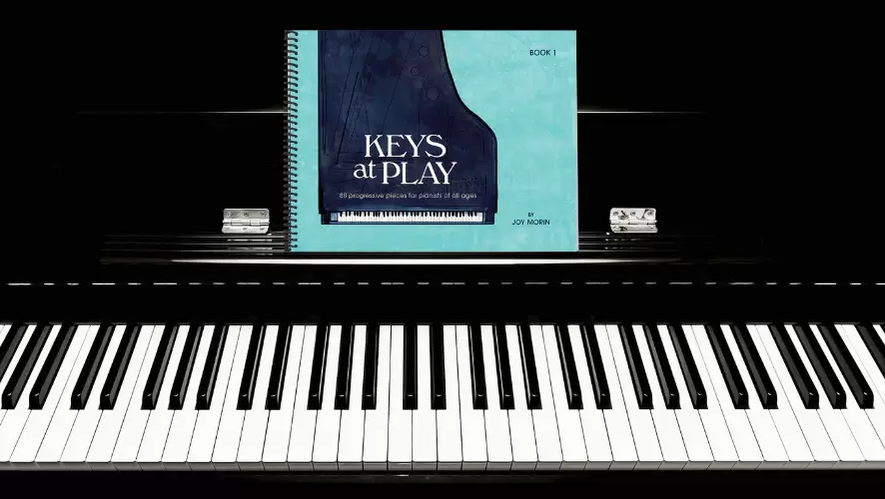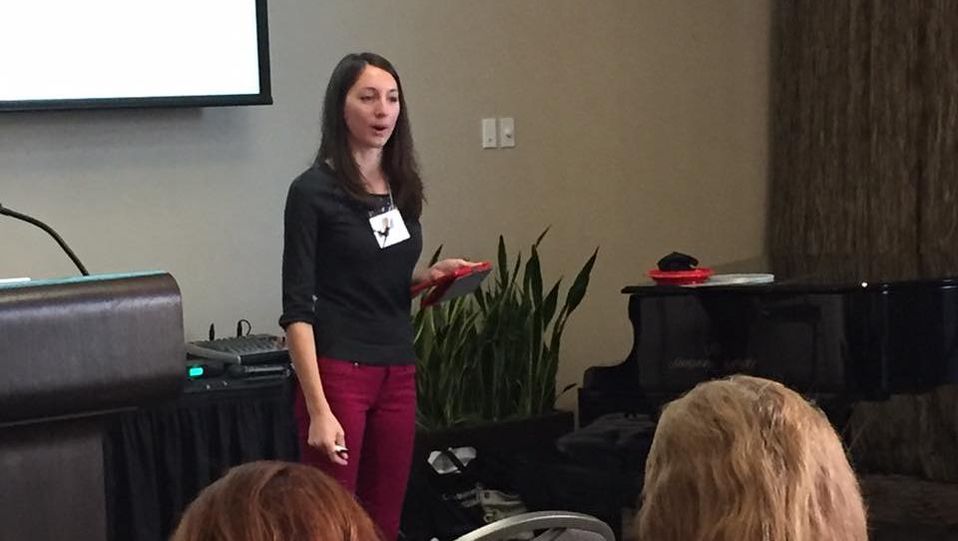Speaking
Below is a list of Joy's available presentation topics. To view her calendar list of past and upcoming speaking engagements, click here. To schedule a program, please contact Joy.
Striking a Chord with Your Students: Nurturing Young Composers in Your Music Studio
Do you have budding composers in your studio? This engaging session presents a five-step approach for helping young musicians develop their original musical ideas into polished, fully notated compositions. Learn practical strategies for guiding both reluctant and prolific young composers to compose, notate, illustrate, and “publish” their own musical masterpieces. Experiencing this creative aspect of being a musician can help transform students into passionate, creative, and multi-skilled music makers!
Do you have budding composers in your studio? This engaging session presents a five-step approach for helping young musicians develop their original musical ideas into polished, fully notated compositions. Learn practical strategies for guiding both reluctant and prolific young composers to compose, notate, illustrate, and “publish” their own musical masterpieces. Experiencing this creative aspect of being a musician can help transform students into passionate, creative, and multi-skilled music makers!
Don't Miss a Beat: Strategies for Rhythm Success with Transfer Students
Have you encountered transfer students who experience chronic rhythm problems and seem to have little sense of pulse, but who otherwise play well on their instrument? What do we do when they add extra beats when in 3/4 time, shorten note durations, or struggle performing tricky rhythms accurately? Using strategies based on Edwin E. Gordon’s Music Learning Theory (MLT), this session offers practical activities for addressing rhythm issues in transfer students. Gain fresh, pedagogically-sound ideas to use in your lessons immediately!
Have you encountered transfer students who experience chronic rhythm problems and seem to have little sense of pulse, but who otherwise play well on their instrument? What do we do when they add extra beats when in 3/4 time, shorten note durations, or struggle performing tricky rhythms accurately? Using strategies based on Edwin E. Gordon’s Music Learning Theory (MLT), this session offers practical activities for addressing rhythm issues in transfer students. Gain fresh, pedagogically-sound ideas to use in your lessons immediately!
|
Teaching Music History: Lapbooks, Listening Games, and More Looking for ways to incorporate more music history into your teaching? Learn how “lapbooking” about composers can inspire your students and how listening games can teach students to aurally recognize the style periods of Western classical music. |
Music is Child’s Play: Lessons Learned from My Youngest Student
This session has it all: storytelling, lessons learned, pedagogical insights, and baby videos! Piano teacher Joy Morin shares videos and research documenting her daughter’s first year of developing “preparatory audiation” according to the stages outlined in Edwin E. Gordon’s Music Learning Theory (MLT). Come hear the lessons babies can teach music teachers everywhere and gain insights that can transform our pedagogy of young learners.
This session has it all: storytelling, lessons learned, pedagogical insights, and baby videos! Piano teacher Joy Morin shares videos and research documenting her daughter’s first year of developing “preparatory audiation” according to the stages outlined in Edwin E. Gordon’s Music Learning Theory (MLT). Come hear the lessons babies can teach music teachers everywhere and gain insights that can transform our pedagogy of young learners.
Piano Method Mining: Gems from Past and Present
Join us as we embark on a survey of piano method books from the past to present! We'll begin with early European treatises and progress to contemporary American piano methods -- including some of the best resources at our fingertips resulting rom the new wave of self-published piano methods. You'll leave inspired to try out a new method book or two or incorporate certain nearly-forgotten gems as supplements into your teaching.
Join us as we embark on a survey of piano method books from the past to present! We'll begin with early European treatises and progress to contemporary American piano methods -- including some of the best resources at our fingertips resulting rom the new wave of self-published piano methods. You'll leave inspired to try out a new method book or two or incorporate certain nearly-forgotten gems as supplements into your teaching.
|
Teaching the Way We Learn: 5 Principles from Gordon’s Music Learning Theory (MLT)
This session will present a primer on Edwin Gordon’s groundbreaking contributions to music education research and pedagogy -- known as Music Learning Theory (MLT) -- and share a variety of teaching strategies and activities for tapping into the way our minds naturally learn music: all towards the goal of provoking greater depths of musical literacy (i.e., "audiation") in our students. Created with and ideally co-presented with Amy Chaplin. |
|
“♩= 1 beat” and Other Lies My Music Teacher Told Me
Why does music education typically teach false absolutes such as “a quarter note gets one beat”? Are we truly interested in teaching rhythm itself, or are we perhaps caught up in teaching rhythm notation? This session, based on tenants of Edwin E. Gordon’s Music Learning Theory (MLT) examines SIX different mistruths commonly taught by music educators and theory textbooks and explores how rhythm instruction can be approached more naturally and effectively through movement-based activities and aural comprehension (“audiation”). Discover new avenues for building rhythm, reading, and performance skills in your students! |
|
A Walk-Through of Keys of Play, Book 1
Join Joy Morin to learn more about her book, Keys at Play, Book 1: 88 Progressive Pieces for Pianists of All Ages -- a collection of short, engaging pieces for nurturing audiation and artistic performance in developing pianists. Explore preview pages from the book and hear about the philosophy, sequencing, and ways to use it effectively to help your students develop their rhythm, technique, and audiation skills. Learn more at keysatplay.com. |
|
Play More to Play Better: Building Musicianship Through Games
Let's talk music games! When concepts and skills are brought into new contexts, deeper learning results. And learning is always more effective when having fun! During this session, Joy Morin will discuss how games can be used to improve the quality of our instruction as music teachers. Learn how to select (or create) games that will both entertain and develop important musicianship skills. Connecting with students in playful, fun-loving ways not only makes learning memorable, but also motivating, empowering, and exciting. |
